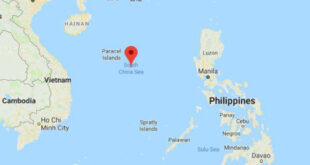Economists were expecting rate to fall below 3% threshold.

Canada’s annual inflation rate held steady at 3.1 per centin November, matching the previous month’s rate, according to data released by Statistics Canada on Tuesday.
Economists were expecting the rate to fall below the three per cent threshold, putting the economy closer to the Bank of Canada’s two per cent inflation goal.
Mortgage interest costs and the high cost of rent remain two of the largest contributors to the inflation rate, rising 29.8 per cent and 7.4 per cent from a year ago, respectively.
Higher prices for travel tours put upward pressure on consumer costs as well. Slower price growth for food, energy and cell services balanced this out.
While the price of groceries rose 4.7 per cent from a year ago, they did so at a slower pace compared to the previous year’s rates for the fifth consecutive month in a row — with a few exceptions, including meat, preserved vegetables and sugar, the agency reported.
If volatile food and energy prices are stripped out from the core inflation number, the consumer price index hovered at 3.5 per cent in November.

Some foods could get cheaper in 2024, but grocery bills may still go up
Canada’s Food Price Report predicts that overall food prices will go up in 2024, but some products could get cheaper as many industry challenges have eased.
Though Bank of Montreal chief economist Douglas Porter called the results “moderately disappointing,” he wrote in a note the bigger picture remains that underlying inflation has lowered, the economy is cooling and the Bank of Canada is still expected to start cutting its key interest rate mid-next year.
- Are you trying to keep holiday costs low this year? Share your creative solutions by emailing ask@cbc.ca.
The Bank of Canada held interest rates steady this month at five per cent for the fourth month in a row, more than a year and a half after beginning its aggressive campaign to cool the economy.
Last week, the central bank’s governor Tiff Macklem said that it was still too soon for the institution to consider rate cuts.
Barbershop owner says costs haven’t come down
Jereme Bokitch, the founder of Calgary hair salon group Hedkandi, said that even as inflation eases, the cost of operating the group’s businesses hasn’t changed accordingly.
“Any time the prices have went up for anything in our world, they’ve never come down,” Bokitch said.

“So as we’re getting, every six months, a price increase for our shampoo, our cleaners, our coffee, every little thing that we use to complete a service, it’s never went back. So it just keeps getting more and more expensive.”
Per Statistics Canada’s latest data, the cost of services remained high in November, rising 4.6 per cent year-over-year and matching October’s rate.
“I think every single thing would need to come down in my business in order to offer a price decrease,” Bokitch added. “And after doing this for 25 years, I’ve yet to see anybody raise their prices and then back them back out.”
Why Canadians aren’t seeing a steep drop in prices
Canadians are still feeling the pressure at the supermarket. Chloe Daley, who spoke to CBC News outside a Toronto grocery store, said “everything is still the same price. It’s still $2.99 for a cucumber when it used to be $0.99.”
“Even though they’re saying it’s slowly going down. I don’t see a change in anything,” she said. “It’s very hard.”

So as inflation continues to trend downward, why aren’t Canadians necessarily seeing prices drop at the store? That’s the difference between inflation and deflation, according to Beata Caranci, chief economist at TD Bank.
When inflation eases, price growth might fall from four to five per cent, to two to three per cent. “But directionally, it’s still up. You’re still going to be paying more this year than last year,” she explained.
An example of deflation, however, would be prices dropping 10 per cent to where they were in 2019, which isn’t likely to happen across the board, Caranci added. It also wouldn’t be a good sign for the economy.
“What the Bank of Canada is looking for is stability in the rate at which prices increase…. They would probably be worried if prices start to really backslide,” she said. “It would tell you you have an imbalance in the economy now on the other side — too much slack. So that would be a concern for them if that happened.”
“For the consumer perspective, what you’re looking for is price stability. You’re not necessarily looking to get the prices you had two to three years ago.”
ABOUT THE AUTHOR

Journalist
Jenna Benchetrit is a web and radio journalist for CBC News. She works primarily with the entertainment and education teams and occasionally covers business and general assignment stories. A Montrealer based in Toronto, Jenna holds a master’s degree in journalism from Toronto Metropolitan University. You can reach her at jenna.benchetrit@cbc.ca.
With files from Anis Heydari and Laura MacNaughton
*****
Credit belongs to : www.cbc.ca
 Atin Ito First Filipino Community Newspaper in Ontario
Atin Ito First Filipino Community Newspaper in Ontario






